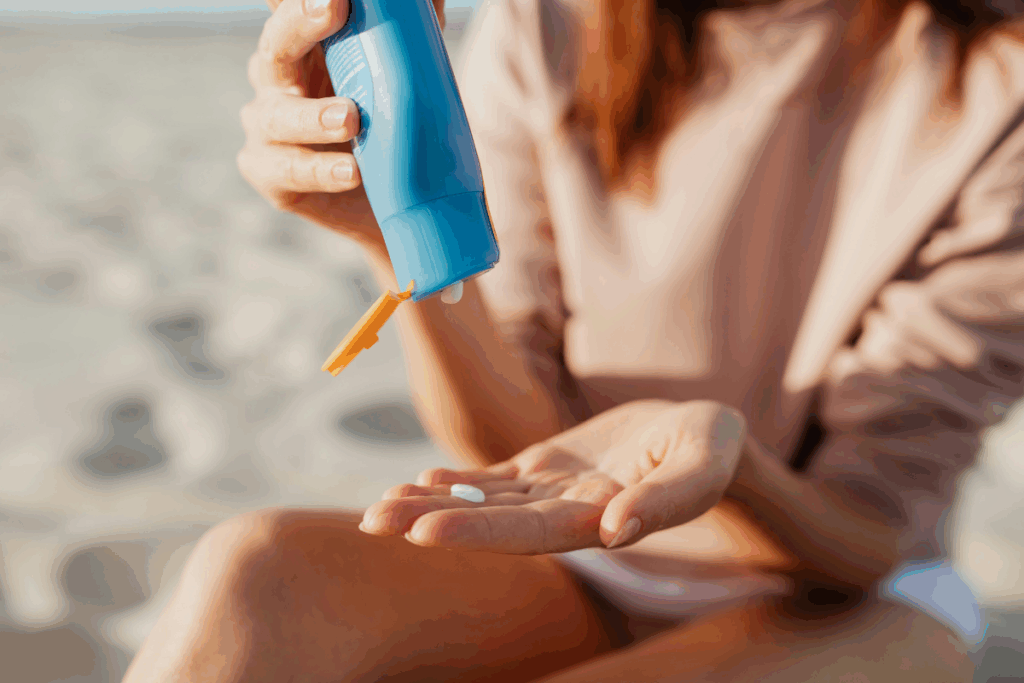Sunscreen isn’t just a summer essential – it’s your skin’s best defence against premature aging, sun damage, and skin cancer year-round. Yet many people still struggle with choosing the right SPF or applying it correctly. This comprehensive guide will transform you into a sunscreen expert, helping you make informed decisions about protecting your skin.
Why Sunscreen Should Be Your Daily Essential
Every day, your skin faces bombardment from harmful UV radiation. Even on cloudy days, studies have shown that up to 80% of UV rays penetrate through clouds, causing invisible damage that accumulates over time. This daily exposure leads to photoaging, dark spots, wrinkles, and significantly increases your risk of skin cancer.
The statistics are sobering: skin cancer is the most common cancer in the UK, with over 100,000 new cases diagnosed annually. However, the good news is that exposure to UV radiation is associated with 80-90% of skin cancers, meaning most cases are preventable with proper sun protection.
Understanding SPF: What Those Numbers Really Mean
SPF stands for Sun Protection Factor, but the numbers can be confusing. Here’s what they actually tell you:
SPF 15 blocks approximately 93% of UVB rays
SPF 30 blocks approximately 97% of UVB rays
SPF 50 blocks approximately 98% of UVB rays
The difference between SPF 30 and SPF 50 might seem minimal, but that extra 1% protection becomes significant during prolonged exposure. Dermatologists recommend using at least SPF 30 for daily wear and SPF 50+ for extended outdoor activities.
Chemical vs Physical Sunscreens: Which Should You Choose?
Understanding the difference between chemical and physical sunscreens helps you select the best option for your skin type and lifestyle.
Chemical Sunscreens
Chemical sunscreens absorb UV radiation and convert it to heat. Common ingredients include avobenzone, octinoxate, and oxybenzone. These formulations tend to be lightweight, transparent, and easy to apply. They’re excellent for daily wear under makeup and for active lifestyles.
Physical (Mineral) Sunscreens
Physical sunscreens containing zinc oxide or titanium dioxide create a barrier that reflects UV rays away from your skin. They’re ideal for sensitive skin, children, and those with rosacea or eczema. Modern mineral formulations have improved significantly, offering better blendability without the heavy white cast.
The Art of Proper Sunscreen Application
Even the best sunscreen fails if applied incorrectly. Follow these expert application tips:
How Much to Apply
Use approximately one teaspoon (5ml) for your face and neck, and one shot glass (30ml) for your entire body. Most people apply only 20-50% of the recommended amount, dramatically reducing protection.
When to Apply
Apply sunscreen 15-30 minutes before sun exposure to allow proper absorption. For chemical sunscreens, this timing is particularly important for optimal protection.
Reapplication Rules
Reapply every two hours, or immediately after swimming, sweating, or toweling off. Water-resistant formulas maintain their SPF for 40-80 minutes during water activities, but reapplication remains essential.
Beyond SPF: Understanding Broad-Spectrum Protection
UVA rays penetrate deeper into the skin, causing long-term damage and aging, while UVB rays cause sunburn. Broad-spectrum sunscreens protect against both types of radiation. In the UK, look for the UVA star rating system or the UVA circle logo, which indicates the sunscreen meets EU standards for UVA protection.

Common Sunscreen Mistakes to Avoid
Missing spots: Don’t forget your ears, hairline, tops of feet, and the delicate area around your eyes.
Expired products: Sunscreen typically expires after three years, but effectiveness can decrease if stored in hot conditions.
Makeup with SPF: While helpful, makeup with SPF shouldn’t be your only protection. Layer dedicated sunscreen underneath for optimal coverage.
Weather assumptions: UV rays are present year-round. Snow, sand, and water can reflect up to 90% of UV rays, intensifying exposure.
Sunscreen Myths Debunked
Myth: “I don’t need sunscreen on cloudy days” Truth: Up to 80% of UV rays penetrate clouds
Myth: “Higher SPF means I can stay in the sun longer” Truth: Higher SPF provides more protection, but reapplication timing remains the same
Myth: “I have dark skin, so I don’t need sunscreen” Truth: All skin types benefit from sun protection
The Bottom Line on Sunscreen Success
Effective sun protection requires consistency, proper application, and choosing the right product for your lifestyle. Remember that sunscreen is just one part of comprehensive sun protection – seeking shade during peak hours (11am-3pm) and wearing protective clothing amplify your defence against UV damage.
According to the British Association of Dermatologists, proper sun protection habits established early in life provide the greatest long-term benefits for skin health. Making sunscreen a non-negotiable part of your daily routine is one of the most powerful anti-aging and health-protective steps you can take.
Your skin protects you every day – return the favour with proper sun protection. Your future self will thank you for the care you show your skin today.
Ready to upgrade your sun protection routine? Contact Cathedral Dermatology to schedule a consultation and receive personalised skincare recommendations tailored to your unique needs and lifestyle.
